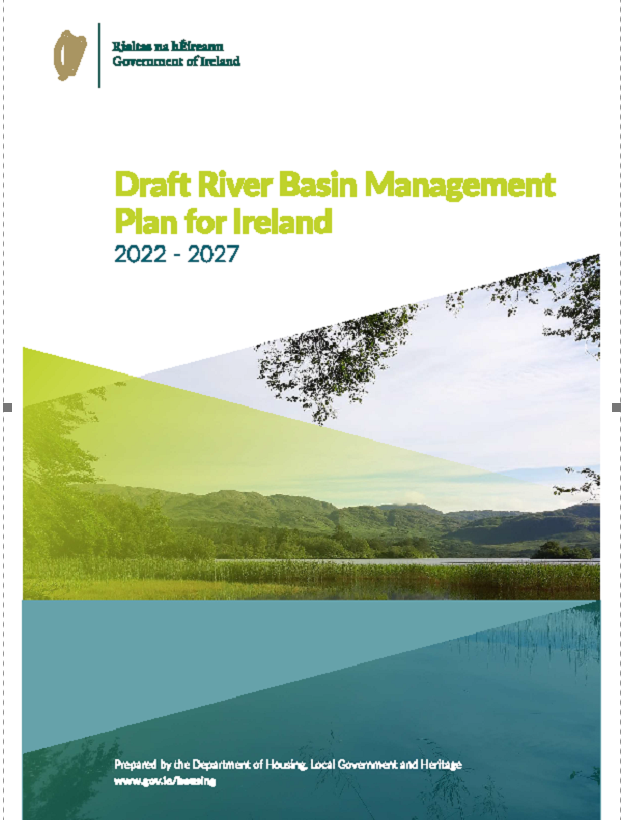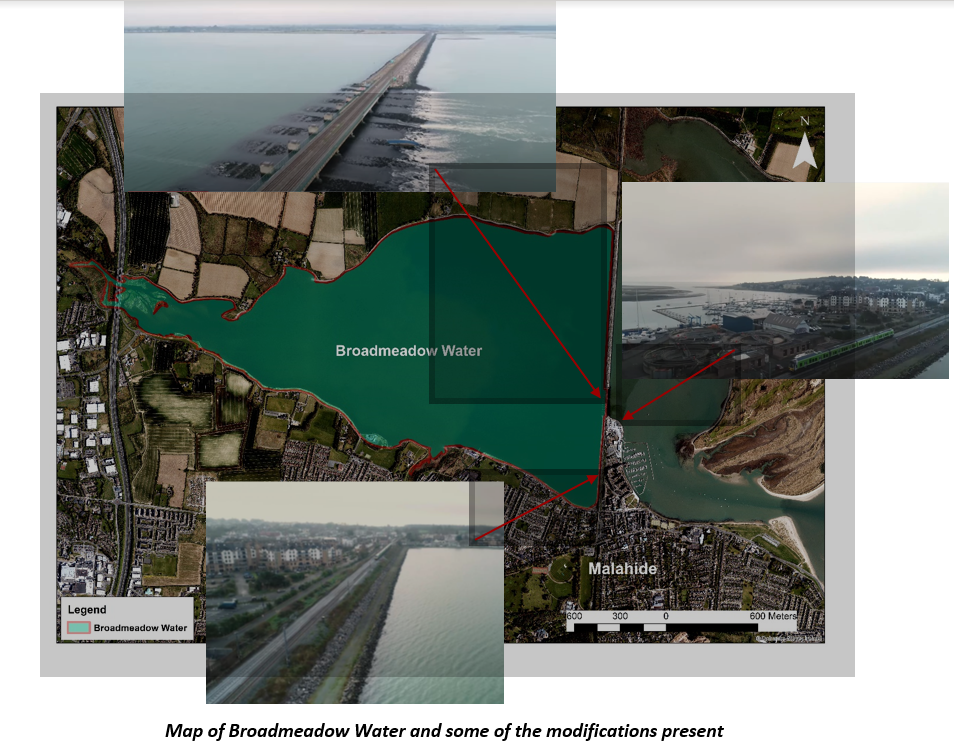River and Lake Water Quality Monitoring
Community Water Development Fund
The Local Authority Waters Programme (LAWPRO) has provided funding to a number of projects across Ireland to help protect and restore good water quality. Under this year's Community Water Development Fund, local communities and voluntary groups around the country will be supported to deal with local issues and undertake action at local rivers, lakes, streams and biodiversity.
In Fingal, Lusk Tidy Towns have been awarded funding for a large scale Palmerstown Stream Restoration Project.
See who else has benefitted from funding in previous years: Funding Previous Years - Local Authority Waters Programme


The Department of Housing, Local Government and Heritage invites submissions, observations and comments on the designation of heavily modified water bodies (HMWBs) for Ireland’s third cycle River Basin Management Plan. The closing date for submissions is 23rd May, 2025.
The purpose of the previous consultation by the EPA was to seek your views on the designation of heavily modified waterbodies, and the review process that has been conducted to feed into the 3rd cycle river basin management plan.
The EPA reviewed the outcomes of that consultation process and made a recommendation to the Minister for Housing, Local Government and Heritage on the waterbodies that meet the technical designation criteria. The EPA also summarised the outcomes of the public consultation and provided all submissions made by the public to the DHLGH. The Minister has reviewed the EPA’s recommendations and submissions from the public and this is the next step in that process.
To assist the public in making submissions, a short document has been drafted to explain the process of heavily modified water body designation. A file outlining the list of potential heavily modified water bodies and the reasons behind their designation is also supplied here along with a file indicating the current 2016-2021 Water Framework Directive Ecological Status of the candidate water bodies. The relevant documents may be accessed by clicking on the links in the section titled ‘Documents’.
If you have any submissions, observations or comments, these can be sent directly to [email protected] . The public consultation is available here.
Crayfish Plague is recognised as a very significant threat to the survival of the globally threatened White-Clawed Crayfish which is commonly found in many lakes, rivers and streams in Ireland. It is an important part of the river ecosystem as it is a grazer of plants and is food for the otter. The White-clawed crayfish is a protected species ((White-clawed Crayfish Austropotamobius pallipes | National Parks & Wildlife Service (npws.ie)).
This disease is considered fatal to all infected native crayfish and where outbreaks occur there is complete extermination of the White-clawed Crayfish populations.
The disease is spread invisibly in water and the infectious stage may be moved to other rivers, lakes and streams on wet equipment, boats and machinery.
If White-clawed Crayfish is to survive in Ireland, then the threat and impact of disease must be contained. This requires all water users ((recreational users, anglers, scientific assessment/samplers etc) taking all practical measures to prevent its spread to unaffected catchments.
What can you do?
Step 1 – CHECK, CLEAN, DRY
The single most effective action is to use the Check, Clean, Dry protocol routinely before and after visiting a river or lake. Check, Clean and allow all equipment to thoroughly DRY-out then dry for further 48 hours.
CHECK – all equipment and remove of any plant and animal matter before leaving a site and again before entering a new site.
CLEAN – Disinfect equipment with an approved disinfectant - see advice below from the National Biodiversity Data Centre
DRY – Ensure equipment is allowed to dry before entering a new site and any residual water is drained from boats etc before leaving a site, see further advice below.
Link here to the National Biodiversity Data Centre information on Crayfish plague - Biodiversity Ireland Maps showing the extent of the outbreaks in Ireland are available at this link.
If drying out equipment is not feasible then equipment should be:
Power Steam washed at a suitably high temperature (at least above 65 degrees) – use of mobile steam power washers or use of nearby power washers at Service stations as an alternative.
Disinfect everything using an approved disinfectant such as Milton (follow product label), Virkon Aquatic (3mg/L), Proxitane (30mg/L) or an iodine-based product for 15 minutes. Items difficult to soak can be sprayed or wiped down with disinfectant.
Engine coolant water or residual water in boats/kayaks should be drained and where possible flushed out with disinfectant. See leaflet for boats users here; https://www.biodiversityireland.ie/wordpress/wp-content/uploads/IFI_boaters-leaflet-1.pdf
STEP 2 - REPORT
Become familiar with the identification of the native and non-native crayfish: view crayfish identification tips.
Click here to view images: Native White-clawed crayfish photos of body: topside may have a slightly wrinkled appearance, and normally a brown to olive colour. Underside pinkish-white.
- Immediately report all suspected sightings of non-native crayfish or dead native White-clawed Crayfish through the online form or to [email protected] with location coordinates and your contact details. If possible, please supply a photo of the crayfish showing the underside of the claws to aid in verifying the sighting.
- Follow the Crayfish Reporting and Sampling Protocol document updated July, 2019.
- Do not release any non-native crayfish into Ireland’s waters, it is illegal to do so.
STEP 3 – RAISE AWARENESS
Please circulate this species alert as widely as possible.
The Government has published the River Basin Management Plan for Ireland 2018-2021. The Plan sets out the actions or measures that Ireland will take to improve water quality and achieve ‘good’ ecological status in water bodies (rivers, lakes, estuaries and coastal waters) by 2027 as is required under the Water Framework Directive (WFD). Measures include the following:
- Planned investment by Irish Water of approximately €1.7 billion in waste-water projects;
- Deployment of 43 local authority investigative assessment personnel, who will work in Prioritised Areas for Action;
- Improved controls for the management of water abstractions;
- A new collaborative Sustainability and Advisory Support Programme between Government and the dairy industry, consisting of 30 Sustainability Advisors promoting agricultural best practice in 190 Areas for Action;
- The development and implementation of a “Blue Dot Catchments Programme” for the protection of high-status waters; and
- The extension of the grant scheme for repairs, upgrade and replacement of domestic waste-water treatment systems, with priority given to high-status catchments.
The Prioritised Areas for Action within Fingal as outlined in the Plan are the catchments of Rogerstown Estuary, Santry River, Mayne River and Upper Tolka.
Stakeholder and public engagement is being led by the recently-established Water Forum (An Fóram Uisce) and the Local Authority Waters and Communities Office (LAWCO). LAWCO drives public engagement, participation and consultation with communities and stakeholders at local and regional level. This engagement is further supported by www.catchments.ie and www.watersandcommunities.ie and by a wide range of other activities aimed at facilitating and encouraging engagement.
If you need more information or you would like to get involved in improving water quality, please contact the Local Authority Waters and Communities Office.
E: Mail: [email protected]
Phone: 0761065262
Website: www.watersandcommunities.ie
Further information is available at